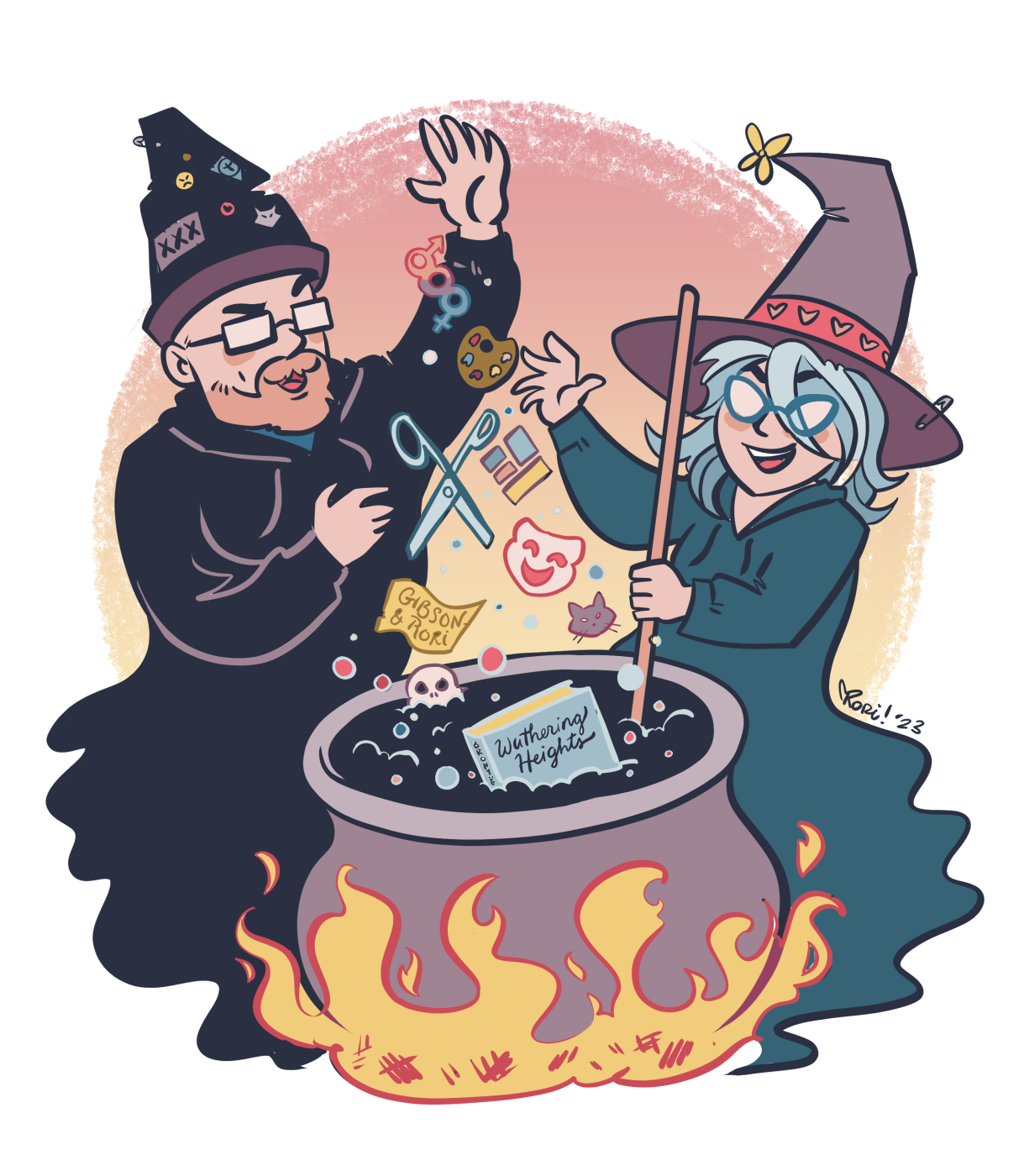I LOVE IT! LET'S CHANGE EVERYTHING!
When we decided to begin working on our graphic novel adaptation of Wuthering Heights, we went to the bookstore and bought two copies of the book. Rori hadn't read it yet and I'd read it once 30 years ago in high school, so the first thing was to figure out if we liked the story enough and had a vision of how to create the story we wanted to tell.
Rori read a few chapters and said to me “This book is wild!”
It was on. We were making this book.
One of the most important decisions to make about an adaptation is whether you want it to be a faithful retelling or spin out in wild directions. Other authors have different philosophies, but my aim is usually to tell the story differently, but to keep it recognizable. The most important thing, though, is to make the story mine, or in this case ours. Why tell the same story in a different medium? People complain when this thing or that are changed when their favourite books are adapted into movies, but those changes are often necessary. They can make the experience fresh and new.
What works on a page doesn't always work on a screen, and what works in prose doesn't always work in words and pictures. Mediums are distinct, they have unique properties and require different approaches. How sound is conveyed, motion, weather, a character's thoughts, the passage of time, the delivery of jokes. What can be conveyed in a single sentence might take panels or pages to illustrate sequentially. What takes paragraphs to describe can be related in a single graphic panel.
We took a couple weeks to read the book, make our own notes. We discussed what we liked and what we wanted to change. I'll do my best not to give away too much, but we figured out immediately that we had to truncate the story a lot, since the original takes place over two generations and about 40 years or so, a little too much for a 260-page comic. We lopped off the second generation of characters and found our ending.
If I'm honest, the ending was one of the first things I wrote, and was immediately happy with it. I like knowing how stories end before I begin to tell them. It gives me a target to head toward, so even when I get lost, I know where I'm heading.
After those two weeks of notes and discussions and “this needs to be in there” and considering what we could get away with, we made a bold decision. We both felt that Emily Bronte intended the book to have a heavy satirical element, and a dark humour. This is contrary to many interpretations, but the way she describes characters is at times brutal in a way that could only be satire. While we opted for a softer misanthropy in our version, we wanted readers to laugh at these ridiculous people and how their nonsense reflects ours.
So, we started writing jokes for Wuthering Heights, not so much as to make it a comedy, but to spike the tragedy.
Another big change was the narrative perspective. The original novel was told through a series of unreliable narrators, at times being a character telling a story told to them of a story that was told to them of a story that was told to them of a story that was...you get it. The main characters are only seen and described by what others see. We wanted to spend more time with Heathclifff and Cathy, see what their relationship was like, the promises they made and the love they shared. We made the choice to tell the story from their perspective, though not to be narrated by them.
Going from a book that is entirely told by side-characters to focus on protagonists at the ground level was limiting in some ways, chiefly in conveying character motivation and speculation, but also freed us up to do more visual storytelling, which is fun as a sequential artist.
And of course, the matter of Heathcliff's gender identity. There's so much I could write about queerness and gender in particular throughout history, but the challenge I faced was how to address an issue that didn't have language, or at least language that would be recognizable now without alienating those communities today. Representation is important, most importantly is to get it right, historically, culturally, and individually to the characters,
I'll write a lot more on this aspect of the writing later, I'm sure, but I'll say we talked about not just how we would represent Heathcliff's gender, but also what that gender identity would be. I don't mind telling you, it wasn't simple, and I suppose it shouldn't have been.
So at the end of those couple weeks, we'd decided on the major points we wanted to hit, what I wanted to write and what Rori wanted to draw, and we spent another couple weeks shuffling and sorting and adding and deleting, until we had our first finished outline.
We liked it. We were happy with our characters, happy with the changes we made and happy with the aspects we kept.
Then all we had to do was everything else.



